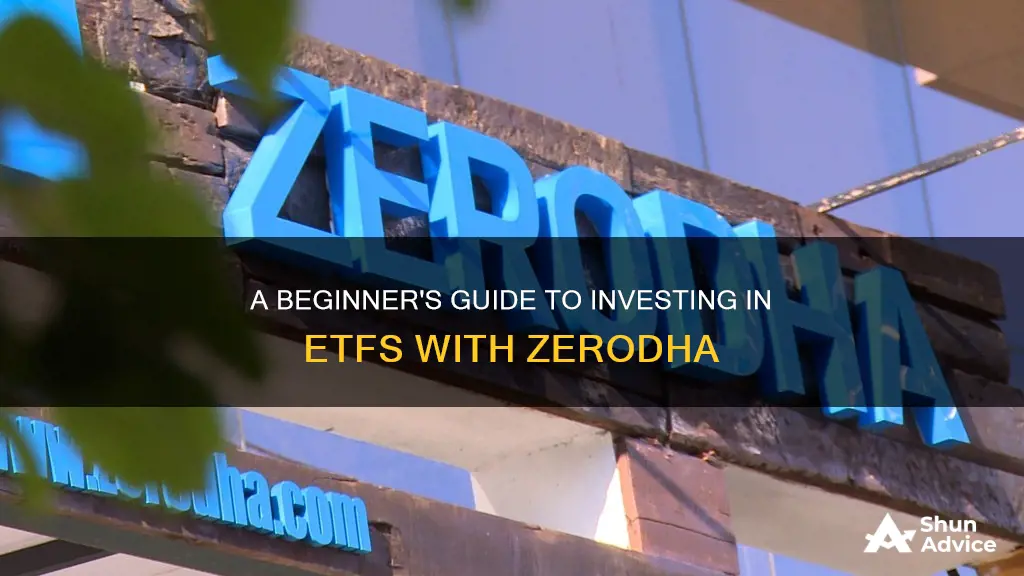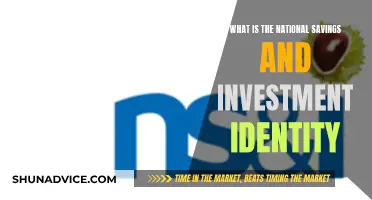
Exchange-traded funds (ETFs) are a type of investment vehicle that holds a basket of securities such as stocks, bonds, and commodities and trades on stock exchanges. ETFs are similar to mutual funds in that they collect money from a variety of investors and pool it together to purchase a diverse range of securities. However, unlike mutual funds, ETFs can be bought and sold anytime during the trading day, just like individual stocks. ETFs are typically designed to track an underlying index, such as the Nifty 50 Index, and provide exposure to a diverse range of stocks or other securities. In India, ETFs have traditionally been used by high-net-worth individuals (HNIs) and institutions, but retail investor participation is growing. Zerodha, a popular Indian brokerage platform, offers a range of ETFs, including the Zerodha Nifty LargeMidcap 250 Index Fund and the Zerodha Nifty 100 ETF. When investing in ETFs through Zerodha or any other platform, it is important to conduct thorough due diligence, understand the liquidity and trading volumes of the ETF, and use limit orders to minimize potential losses.
| Characteristics | Values |
|---|---|
| What is an ETF? | A basket of securities that trades on the stock exchange. |
| How does an ETF work? | When you buy an ETF, you don't usually interact with the AMC as most buying and selling happens on the stock exchanges. |
| Creation and redemption mechanism | If you are buying in multiples of the creation unit size, buying directly from the AMC is better as you might face liquidity issues and impact costs when buying large quantities on the exchange. |
| Net asset value (NAV) | The end-of-day value of all the fund's assets. |
| Intraday or indicative net asset value (iNAV) | The reference point to see if the market price is a fair one. |
| Liquidity | An important thing to consider when buying or selling an ETF as they trade in real-time. |
| Types of ETFs | Equity ETFs, Debt ETFs, and Commodity ETFs. |
| How to buy an ETF | Always use limit orders when buying or selling ETFs. |
What You'll Learn

Zerodha ETF basics
An Exchange-Traded Fund (ETF) is a basket of securities that tracks an underlying index. ETFs are similar to mutual funds in that they are pooled investment vehicles that hold a basket of securities like stocks, bonds, and commodities. However, unlike mutual funds, ETFs trade on stock exchanges, allowing investors to buy and sell them anytime like stocks. ETFs have been available in India since 2002, but they have not gained widespread popularity among retail investors.
When investing in ETFs through Zerodha, it is important to use limit orders rather than market orders. This is because ETFs can have liquidity issues, and placing market orders can result in poor trade executions. Additionally, investors should always compare the market price of the ETF with the intraday or indicative Net Asset Value (iNAV) before buying or selling. The iNAV can be found on the respective Asset Management Company's (AMC's) website.
Another important consideration when investing in ETFs is the tracking error, which measures how closely an ETF tracks its underlying benchmark. A lower tracking error indicates that the ETF is tracking the index more accurately. However, it is important to note that the tracking error is calculated based on the Net Asset Value (NAV), which is only announced at the end of the day, while ETFs trade in real-time. Therefore, it is crucial to compare the ETF price with the total returns index (TRI) rather than the price returns index (PRI) when analyzing the tracking error.
Zerodha offers a range of ETFs, including the Zerodha Nifty LargeMidcap 250 Index Fund, Zerodha ELSS Tax Saver Nifty LargeMidcap 250 Index Fund, Zerodha Nifty 1D Rate Liquid ETF, Zerodha Nifty 100 ETF, and Zerodha Nifty Midcap 150 ETF. These ETFs provide exposure to India's top companies across different sectors and have low expense ratios compared to actively managed funds.
ETFs are a great way to invest in a diversified portfolio of securities and track the performance of an underlying index. By following the basics outlined above, investors can make informed decisions when investing in ETFs through Zerodha.
Explore Careers in Investment Management: Job Opportunities Abound
You may want to see also

How to buy and sell ETFs
An exchange-traded fund (ETF) is a basket of securities that tracks an underlying index. For example, a Nifty 50 ETF tracks the performance of the 50 biggest Indian stocks across 13 sectors. ETFs are similar to mutual funds in that they are pooled investment vehicles that hold a basket of securities like stocks, bonds, and commodities. However, ETFs trade on the stock exchanges, so you can buy and sell them anytime, just like a stock.
To buy and sell ETFs, follow these steps:
- Find a Broker: You will need to open an account with a broker such as Zerodha that offers ETF trading on the NSE and BSE websites.
- Search for ETFs: Use the broker's platform to search for available ETFs. For example, searching for "Nifty ETF" will show all ETFs tracking the Nifty 50 index.
- Use Limit Orders: When buying or selling ETFs, always use limit orders instead of market orders. A limit order allows you to set the maximum price you are willing to pay for a buy order or the minimum price you are willing to accept for a sell order. This helps ensure you get a good price for your trade.
- Check the iNAV: Before placing a limit order, check the indicative Net Asset Value (iNAV) on the AMC website. The iNAV is the real-time value of the ETF, calculated by the AMC every 10-15 seconds. Compare the iNAV with the current market price to determine if the ETF is trading at a premium or discount.
- Compare the ETF with the Underlying Index: Analyze the difference between the ETF price and the underlying index to see how closely the ETF tracks its benchmark. You can use intraday charts to compare the ETF with the index.
- Consider Trading Volumes and Liquidity: While trading volumes and AUM are important factors, they don't tell the whole story about ETF liquidity. Also, consider the market depth, primary market liquidity, and the liquidity of the underlying stocks that make up the ETF.
- Avoid Trading at Market Open: ETFs may trade at abnormal prices during the first 30 minutes to 1 hour of the market open due to low volumes. If you must trade during this period, use limit orders and check the iNAV.
- Choose an AMC Focused on ETFs: Some AMCs are more serious about their ETF offerings than others. Consider ETFs from Nippon, ICICI, and SBI, which have higher trading volumes. Avoid ETFs with high tracking errors and low volumes, such as those from Aditya Birla, IDBI, LIC, and Indiabulls.
- Contact the AMC for Large Investments: If your investment amount is equal to or more than the creation basket value, contact the AMC directly to create units instead of buying on the stock exchange. This helps avoid liquidity issues and impact costs.
By following these steps, you can effectively buy and sell ETFs on the Indian stock market. Remember to do your due diligence before investing, as blindly choosing an ETF can be risky.
Diversifying Investment Portfolios: Strategies for Balancing Risk and Returns
You may want to see also

ETF due diligence
When investing in an ETF in India through Zerodha, it is important to conduct thorough due diligence. Here are some key considerations for your due diligence process:
Examine the Structure of the ETF:
Understand the investment program, tax consequences, custodial policies, and other nuances that could impact the effectiveness of the ETF. For example, consider the difference between buying ETF units on the stock exchange and directly from the Asset Management Company (AMC).
Understand the Underlying Index:
Ensure that the index aligns with your investment thesis and desired outcome. Ask yourself if the investment objective is simply to beat the benchmark or if it is more important to "invest with purpose." Evaluate the index's measurability, appropriateness, and reflectiveness of current investment options.
Understand the Investment Manager:
Get to know the investment manager's firm, professionals, processes, philosophy, and performance. Review the prospectus, especially for an active strategy, and examine the manager's investment process. Understand their depth of investment expertise, strategies for managing tax consequences, handling of transaction costs, and tactics for dealing with tracking errors.
Evaluate Costs:
Consider explicit costs such as expense ratios, commissions, and bid/ask spreads. Also, pay attention to implicit costs like capital gains, turnover within the fund, tracking success against its index, and distribution or platform fees. Remember that lowering an explicit cost can sometimes increase implicit costs or reduce the effectiveness of the investment strategy.
Compare ETF Performance with the Underlying Index:
Compare the ETF price with the total returns index (TRI) of the underlying index, as ETFs track the TRI, which includes dividends. Analyze how closely the ETF tracks its underlying benchmark over time.
Use Limit Orders:
When buying or selling ETFs, always use limit orders instead of market orders. This gives you more control over the price at which your order is executed, avoiding potential price fluctuations.
Check the Intraday Net Asset Value (iNAV):
Always compare the ETF market price with the iNAV, which serves as a real-time reference value. You can find the iNAV on the AMC's website. A significant difference between the iNAV and the market price may indicate an issue that requires further investigation.
Assess Trading Volumes and Liquidity:
While trading volumes and Assets Under Management (AUM) are important factors, they don't tell the whole story about an ETF's liquidity. Consider the market depth, primary market liquidity, and the liquidity of the underlying stocks that make up the ETF.
Evaluate the AMC's Focus on ETFs:
Not all AMCs are equally committed to their ETF offerings. Check if the AMC offering the ETF is serious about ETFs and has a track record of managing them effectively.
Consider Creating Units Directly with the AMC:
If your investment amount is equal to or more than the creation basket value, consider approaching the AMC to create units directly instead of buying on the stock exchange. This can help you avoid liquidity issues and impact costs associated with large transactions on the exchange.
Passive Management: Investment Vehicles and Strategies Explained
You may want to see also

ETF vs index funds
Exchange-traded funds (ETFs) and index funds are two simple ways to invest. They are alike in that they both combine money from multiple individuals into a professionally managed portfolio that could contain stocks, bonds, and other assets. However, there are some technical differences between ETFs and certain index funds.
Trading Mechanism
The most significant difference between ETFs and index funds is how and when you buy shares in them and their flexibility. ETFs trade throughout the day on a stock exchange, just like stocks, and their price fluctuates based on supply and demand. On the other hand, you can buy or sell shares in index funds only once at the close of each trading day for the price set at 4 p.m. ET.
Liquidity
Liquidity is another key difference between ETFs and index funds. Since index funds are bought and sold at the end of the trading day, liquidity is not as readily available as with ETFs.
Minimum Investment
ETFs generally do not require a minimum initial investment. You can buy an ETF for the price of just one share, usually referred to as the ETF's "market price." In contrast, index funds often have a minimum investment requirement, which can be a barrier for some investors, though these are typically dropped if you are investing through your paycheck.
Tax Efficiency
ETFs are generally more tax-efficient than index funds because of their creation/redemption process, potentially leading to fewer capital gains distributions. Unlike index funds, ETFs do not trigger capital gains taxes when other investors cash out.
Trading Costs
With ETFs, you could owe a trading commission, a flat fee each time you buy or sell, depending on your broker. However, some brokers do not charge trading commissions on ETFs. Mutual funds can be purchased without trading commissions, but they may carry other fees, such as sales loads or early redemption fees.
Tracking Performance
The returns of ETFs and index funds are generally very similar when they track the same index, as both aim to replicate the performance of their benchmark. Any differences in returns are usually minimal and often come down to tracking error, expenses, and how dividends are handled.
Suitability
If you plan on trading often, ETFs are generally better since you can buy and sell shares throughout the trading day. If you are a long-term investor, index funds could be a better choice since you don't have to worry about minimizing transaction costs. ETFs could also be a good option if you are in a higher tax bracket as they can help reduce your tax liability.
Investment Managers: Are They Regulated?
You may want to see also

ETF charges and fees
When investing in ETFs in India through Zerodha, there are several charges and fees to be aware of. These include:
Brokerage Charges
Zerodha offers free equity delivery investments on the NSE and BSE, with no brokerage fees. For intraday and F&O trades, Zerodha charges a flat rate of ₹20 or 0.03% per executed order, whichever is lower, across equity, currency, and commodity trades. Option trades are also charged at a flat rate of ₹20 per order.
Securities/Commodities Transaction Tax (STT)
The government levies an STT when transacting on exchanges. This is charged on both the buy and sell sides for equity delivery trades and only on the selling side for intraday or F&O trades.
Transaction/Turnover Charges
These are charges imposed by exchanges (NSE, BSE, MCX) based on the value of your transactions. For example, the BSE has revised transaction charges in specific groups to ₹10,000 per crore.
Stamp Charges
The Government of India imposes stamp charges as per the Indian Stamp Act of 1899 for transactions involving instruments on stock exchanges and depositories.
Depository Participant (DP) Charges
DP charges are levied when stocks are sold, regardless of the quantity. Zerodha charges ₹15.34 per scrip, which includes a CDSL fee of ₹3.5, a Zerodha fee of ₹9.5, and GST of ₹2.34. Female demat account holders as the first holder receive a discount of ₹0.25 per transaction on the CDSL fee. Additionally, debit transactions of mutual funds and bonds are eligible for an extra discount of ₹0.25 on the CDSL fee.
Account Maintenance Charges (AMC)
For BSDA demat accounts with a holding value below ₹400,000, Zerodha charges no account maintenance fees. For non-BSDA demat accounts, there is a quarterly fee of ₹300 plus 18% GST.
Corporate Action Order Charges
Zerodha levies a fee of ₹20 plus GST for OFS, buyback, takeover, or delisting orders placed through Console.
Off-Market Transfer Charges
Off-market transfers incur a charge of ₹25 or 0.03% of the transfer value, whichever is higher.
Payment Gateway Charges
Payment gateway charges are typically ₹9 plus GST, although they are waived for transfers made via UPI.
Delayed Payment Charges
If your trading account has a debit balance, interest is charged at 18% per year or 0.05% per day.
Physical CMR Request Charges
While the first CMR request is free, subsequent requests incur a fee of ₹20 plus courier charges of ₹100 plus 18% GST.
NRI Brokerage Charges
For NRI accounts, Zerodha charges 0.5% or ₹100 per executed order for equity trades, whichever is lower, for non-PIS accounts. For PIS accounts, the fee is 0.5% or ₹200 per executed order, whichever is lower. Additionally, there is a yearly account maintenance charge of ₹500 plus GST.
Charges for Account Opening
Zerodha charges fees for opening specific types of accounts, such as NRI and partnership accounts.
Planning Savings and Investments: Strategies for Financial Freedom
You may want to see also
Frequently asked questions
An Exchange-Traded Fund (ETF) is a basket of securities that tracks an underlying index. For example, a Nifty 50 ETF tracks the composition of the Nifty 50 Index. When you buy a Nifty ETF, you are getting exposure to the 50 stocks that form the Index.
You can search for ETFs on Zerodha's Kite platform. You can also find a list of tradeable ETFs on the NSE and BSE websites.
ETFs are a low-cost way to get exposure to the market. For example, the Nifty has outperformed 90% of all large-cap mutual funds. ETFs are also flexible as they can be bought and sold at any time.
ETFs may have liquidity issues, especially in smaller markets like India. There may also be tracking errors, where the ETF does not perfectly match the performance of the underlying index.







